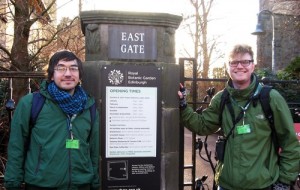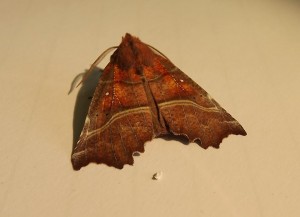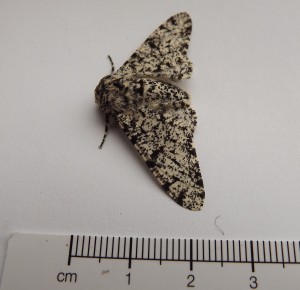Thanks to the enthusiasm of James and Thomas from the local Developing Ecological Surveying Skills (DESS) team at the SWT office near the Garden there is now a regular moth trapping survey taking place. Working in pairs the team installs two traps after the Garden closes and removes them the next morning prior to opening. The plan is to trap regularly through the year so we can see how moth numbers and species change with the seasons.
Last weekend gave a good catch with a reasonable diversity of species that reflect the warmer weather we have been enjoying.
Moth numbers peak in the warmer months of July and August as more species emerge. In March the team recorded relatively small numbers of early emerging typical spring species including; Clouded Drab (Orthosia incerta), Common Quaker (Orthosia cerasi), Small Quaker (Orthosia cruda) and Hebrew Character (Orthosia gothica).
The spectacular-looking Herald Moth (Scoliopteryx libatrix) overwinters as an adult. The food plants of the Herald Moth larvae are willow and poplar tree species.
The two areas of trapping have been selected so that one is predominantly native plants and the other is mainly exotics. It will be interesting to see if the two areas support different species of moths. The Herald has so far been found in both areas. Only the sustained trapping being carried out by the DESS team can answer simple questions like this.
One of the text book examples of natural selection that is a favourite of biology teachers is the story of the Peppered Moth (Biston betularia) which evolved from the normal mottled grey colouration into a black form that was harder for birds to spot on the dark pollution encrusted surfaces of trees during the industrial revolution. This species has also been trapped in the Garden and the photo shows the normal colouration of this species. To read the whole story of the peppered moth follow the link to Cambridge University.




1 Comment
1 Pingback